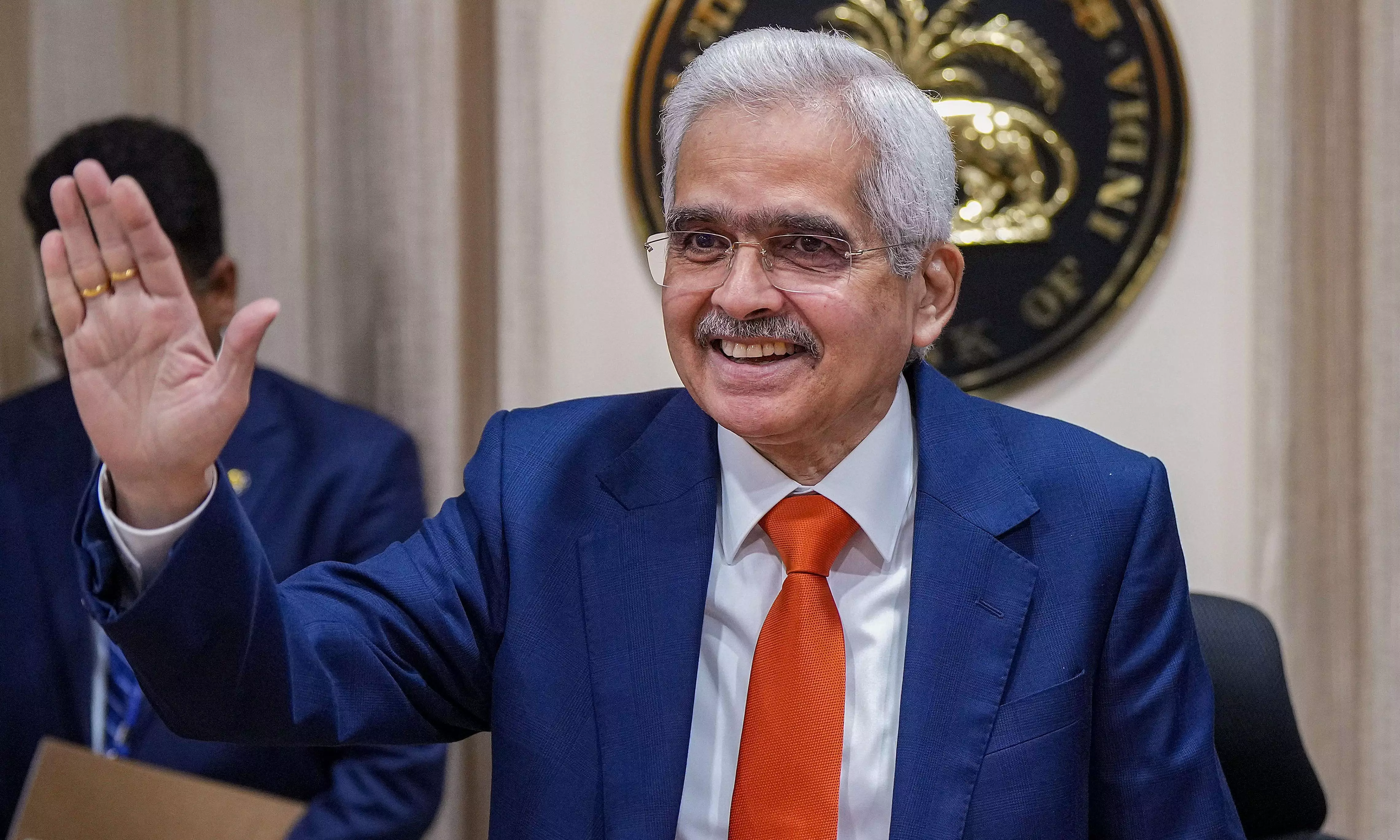
8 key takeaways from RBI Governor's monetary policy speech
Launch of card-on-file tokenisation, bringing PM Vishwakarma under PIDF scheme, among others, to help customers, says Das

Reserve Bank of India Governor Shaktikanta Das on Friday said the Monetary Policy Committee (MPC) had decided to keep the repo rate unchanged at 6.5 per cent. Addressing a press conference after the announcement of the bi-monthly monetary policy review, Das made several remarks on the state of the economy. The Federal lists the key takeaways.
1. Repo rate
According to Das, the RBI's decision to retain the repo rate at a steady 6.5% underscores the central bank's strategy to balance economic growth while keeping inflation in check. All the six members of the MPC unanimously voted to keep repo rate unchanged, he said. Further, he said, the RBI remains focused on withdrawal of accommodation support growth, and on taming inflation. A cumulative repo rate hike of 250 bps, implemented over the past cycles, is still working its way through economy, he observed.
2. Rs 2,000 note withdrawal
Das said that 87 per cent of the Rs 2,000 denomination notes being withdrawn have returned as deposits into banks while the rest has been exchanged across counters. Around Rs 12,000 crore of the Rs 3.56 lakh-crore worth of Rs 2,000 notes in circulation as on May 19, 2023 are yet to come back, he added.
3. RBI may use OMO sale of govt papers
The RBI may use Open Market Operation (OMO) sale of government papers to manage liquidity, said Das. He also said the phased withdrawal of Incremental Cash Reserve Ratio (I-CRR) ending on October 7 was part of the RBI's liquidity management exercise.
The release of the remaining impounded I-CRR funds on October 7 along with pickup in government spending are expected to ease liquidity conditions during the upcoming festival season, he said. "Festival time increase in currency demand may, of course, act as a counter balancing factor. It is a turning pitch and we will play our shots carefully," he added.
4. PM Vishwakarma under PIDF
It has been decided to include PM Vishwakarma under the Payments Infrastructure Development Fund (PIDF) Scheme, said the RBI Governor. Also, the tenure of the PIDF scheme is being extended by another two years, up to December 31, 2025, he added.
Operationalised in January 2021, the PIDF Scheme aims at incentivising the deployment of payment acceptance infrastructure such as physical Point of Sale (PoS), Quick Response (QR) codes in tier-3 to tier-6 centres, north-eastern states and Union Territories of Jammu & Kashmir and Ladakh. As per the original plan, the tenure of PIDF scheme was fixed for three years till December 2023.
PM Vishwakarma scheme, launched by Prime Minister Narendra Modi last month, proposes to offer up to 8 per cent subsidy for loans given to artisans.
5. Curbing inflation
Das said inflation is likely to ease in September next year, adding that the RBI estimates retail inflation at 5.4 per cent for FY 2023-24. However, he added, the overall inflation outlook is clouded by uncertainties from the fall in Kharif sowing for select crops such as pulses and oil seeds. Also, lower reservoir levels and volatility in global food and energy prices might impact inflation, he observed.
"Retail inflation to moderate to 5.2 per cent in next year from the current level of 6.8 per cent," Das said. "Indications are that food inflation may not see sustained easing in Q3. A significant easing of inflation pressures from its exceptionally high level in July and August is expected to materialise in September as the impact of fleeting food price shocks wanes."
6. Gold loan limit doubled
The RBI announced doubling the lending limits for gold loans under the bullet repayment scheme for urban cooperative banks to Rs 4 lakh. "It has been decided to increase the existing limit for gold loans under the bullet repayment scheme from Rs 2 lakh to Rs 4 lakh in respect of urban cooperative banks (UCBs) who have met the overall target and sub-targets under the Priority Sector Lending (PSL) as on March 31, 2023," said Das.
A bullet repayment scheme is one where a borrower repays interest and the principal amount at the end of a loan tenure without worrying about repayment during the loan tenure. Das, who had a meeting with top brass of UCBs recently, said the measure is in line with the RBI's earlier announcement of providing "suitable incentives" to UCBs that have met the prescribed PSL targets, wherein a lender is mandated to devote a certain part of its overall lending for the marginalised sector.
7. Interbank call money market
The RBI Governor underscored the importance of banks with surplus funds exploring lending opportunities in the interbank call money market. He suggested that it is more beneficial for banks to engage in lending activities in this market rather than parking funds in the Standing Deposit Facility (SDF) where rates are comparatively less attractive.
He added that “greater volume of call money transactions would help deepen the interbank call money market and also lower the need for some lenders to rely on the marginal standing facility (MSF)”.
8. Card-on-file tokenisation:
The RBI has proposed the introduction of card-on-file tokenisation (CoFT) facility at the issuer-bank level. With this, customers can generate card tokens on their bank’s website or app instead of e-commerce websites / apps while shopping online (as it is done right now). This is expected to eliminate data security concerns over token generation at e-commerce portals.

